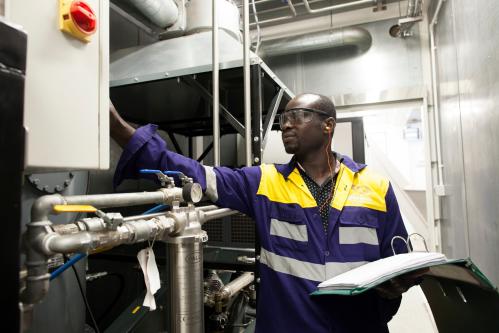Last week President Obama announced the creation of an Advanced Manufacturing Partnership intended to create good manufacturing jobs and improve U.S. competitiveness. The Partnership, supported by more than $500 million in existing federal funds, is a government-industry-university initiative oriented toward high tech innovation in manufacturing. Specific plans include creating the next generation of robots, developing energy-efficient manufacturing processes, speeding up the development and production of advanced materials, and improving domestic manufacturing capability in technologies crucial to national security (such as advanced composites and small, high-powered batteries). Chaired by Dow Chemical CEO Andrew Liveris and MIT president Susan Hockfield, the Partnership will initially include a dozen large manufacturers and half a dozen major universities.
Although the devil is always in the details (including the details of future budget deals between the President and Congress), this is welcome news. The Partnership embraces technological innovation as key to the future of manufacturing in this country. It includes both product and process innovation. It is really about innovation, the application of knowledge to create new products and production methods, not just invention or education, which the administration previously emphasized when talking about manufacturing. It recognizes that innovation can’t be left to market forces alone, but requires the active cooperation of government, business, and higher education. Furthermore, its programs require cooperation among federal agencies that are involved in promoting manufacturing innovation but are too often siloed.
The Partnership, by itself, isn’t a complete U.S. manufacturing strategy. Such a strategy would have to be based on an assessment of the national goals that we want manufacturing policy to achieve—such as more innovation, more balanced trade, a strong middle class, and the ability to meet national defense needs with domestic products—and the ability of U.S. manufacturing, with the support of appropriate policy, to further those goals. The President’s new initiative addresses only the innovation and national defense goals directly.
The Partnership also can’t be the sole basis for a broader manufacturing strategy. A strategy would have to deal with trade issues, especially the still highly undervalued Chinese yuan. Because suppliers account for about one in five manufacturing jobs and will create many of the jobs that ultimately flow from new, federally funded technologies, a manufacturing strategy would also have to include policies to improve the technological and management capabilities of suppliers and the relationships between assemblers and suppliers. Furthermore, a strategy would have to find ways to ensure that federally funded R&D leads to the creation of manufacturing jobs in this country rather than just the creation of more offshore jobs by the multinational companies benefiting from it. A partnership of large, multinational assemblers, research universities, and federal agencies is poorly suited to address these problems. Big multinational firms do not necessarily share the national interest in bringing down the value of the yuan, maintaining cooperative (as opposed to just price-squeezing) relationships with suppliers, or creating good jobs in the United States.
To date, the Obama administration has made some good, small-scale efforts to strengthen American manufacturing, including getting more adequate funding for the Manufacturing Extension Partnership Program and using economic stimulus funding to promote renewable energy manufacturing. But it has mostly shied away from bigger initiatives, always fearful of being accused of conducting “industrial policy.” Aside from the rescues of GM and Chrysler, the Advanced Manufacturing Partnership is the administration’s boldest foray into manufacturing policy. Let’s hope that it’s not just another useful but isolated manufacturing initiative, but is instead a step toward a much needed federal manufacturing strategy.









Commentary
Op-edThe Advanced Manufacturing Partnership: A Step Toward a Federal Manufacturing Strategy?
June 29, 2011